Best Squier guitars 2025: Stratocasters, Telecasters, Jaguars and more for the budget-conscious player
From budget Teles, to vintage-spec’d Strats, we look at the best Squiers available today
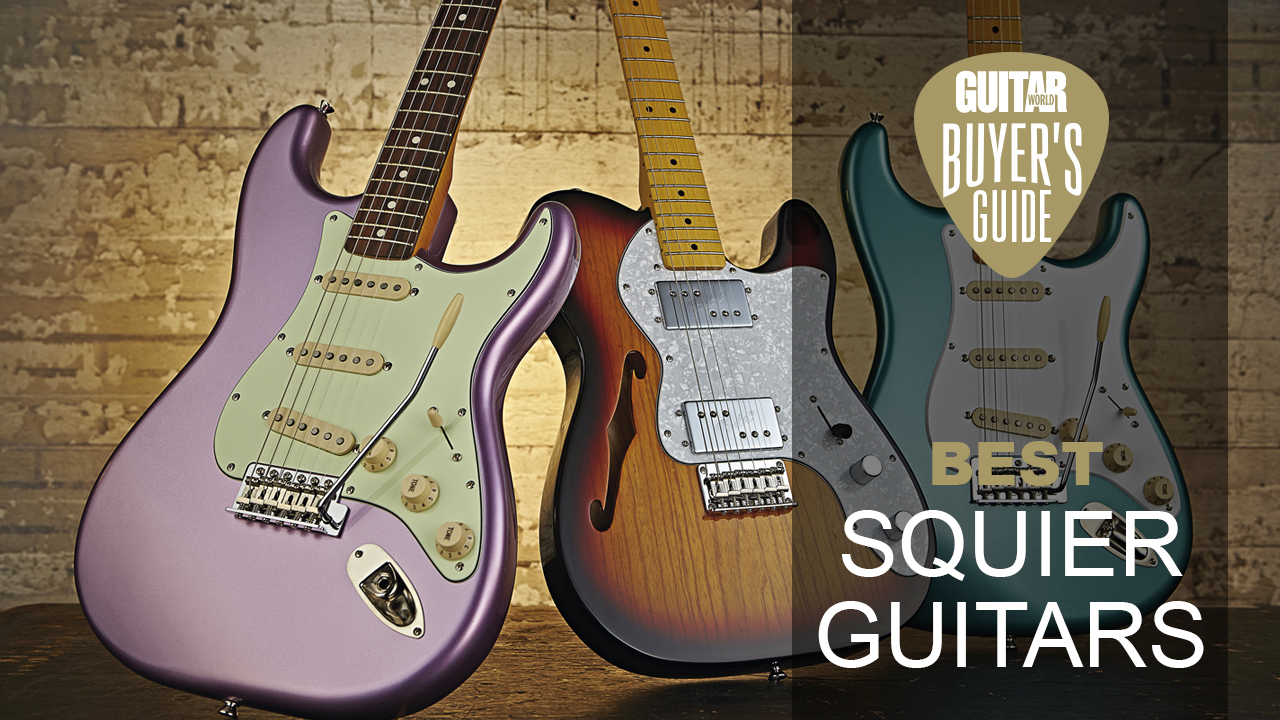
Squier is the designated budget brand for one of the world’s most famous guitar manufacturers in Fender, but that doesn’t mean they are a brand that's only for beginners. The best Squier guitars are quality instruments in their own right, more than worthy of their place in the pantheon of great guitars.
Combining great build quality with excellent value for money, Squier builds guitars that range from beginner-friendly in the Squier Sonic series, the Classic Vibe series that gives you vintage tones made affordable, and the Paranormal Series which serves as a place for sonic experimentation that would be too ‘out there’ for the full Fender brand. From Fall Out Boy’s Joe Trohman to Kevin Parker from Tame Impala, many professional guitarists have been seen rocking Squier guitars onstage, proof enough that these are guitars to be taken seriously despite their low-cost ethos.
We’ve tested a myriad of Squier guitars over the years, and got our start on the classic Squier Affinity Stratocaster, which gives us the perfect overview to recommend the very best available right now. Whether you want something on a budget, a classic like a Strat or Tele, or you just want something a little more exotic, keep reading to see our top picks.
Our top picks

If you need a great playing guitar on a budget, the Squier Sonic Stratocaster HT is our top choice. Great for beginners, it packs robust build quality with classic Strat tones in a package that only just sits above the $/£100 mark.
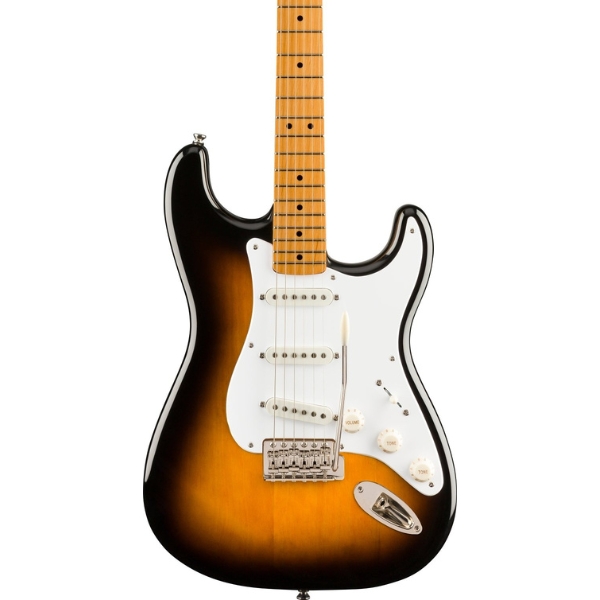
The Squier Classic Vibe ’50s Strat gives you a vintage look, with the classic Strat sound that we know and love. The pickups sound great and it’s built to an excellent standard, making it a great, intermediate-level guitar.
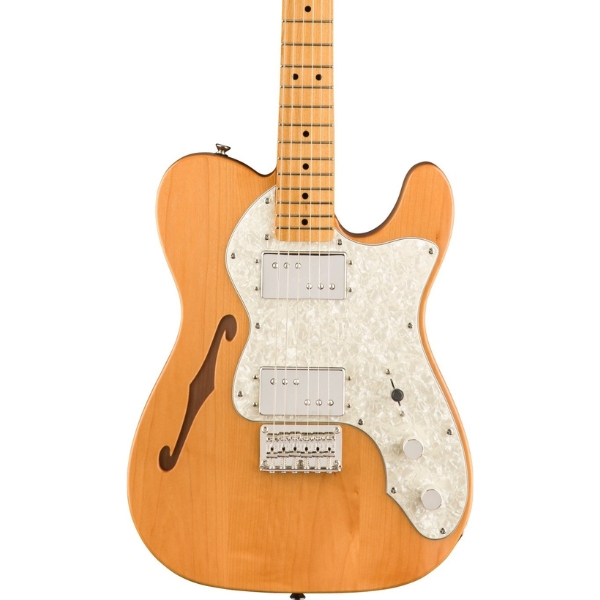
Amongst the most versatile of guitars out there, the Squier Classic Vibe ‘70s Telecaster Thinline adds an extra touch of tone with its semi-hollow design. Combined with two powerful humbuckers, it's our favorite Squier Tele.
Best budget option
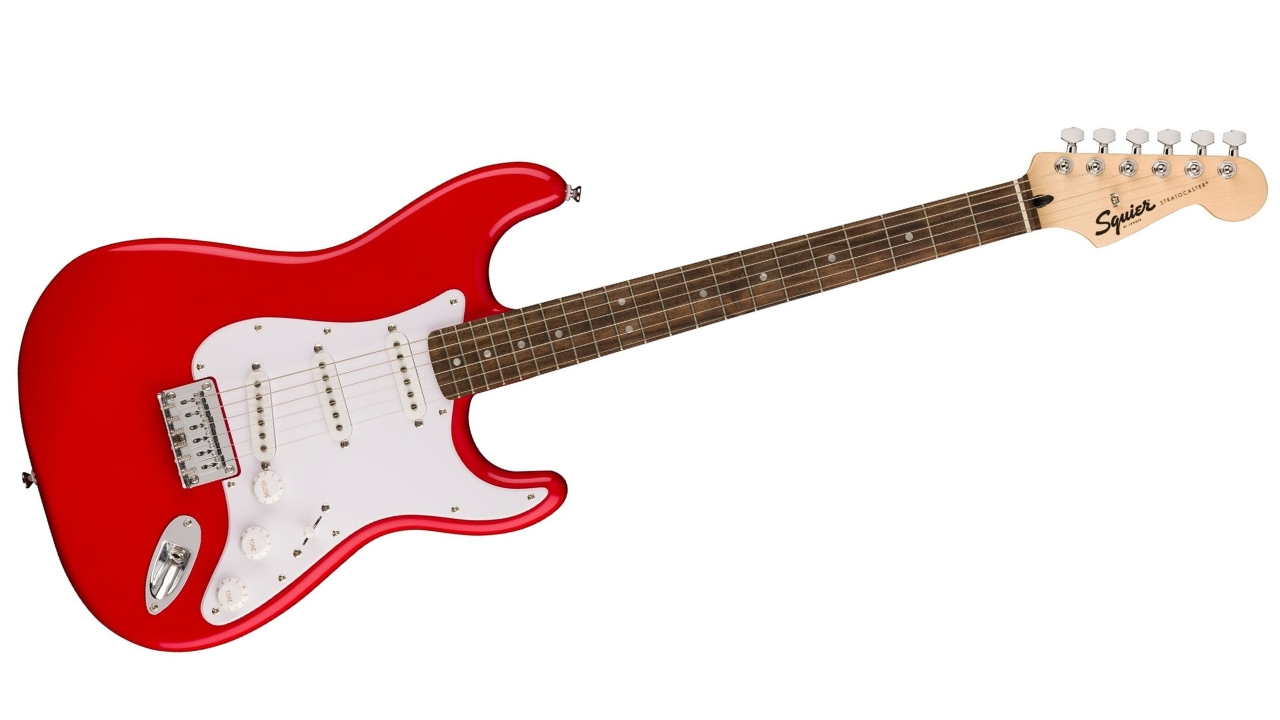
Specifications
Reasons to buy
Reasons to avoid
Successor to the immensely popular Squier Bullet Strat, the Squier Sonic Stratocaster HT is the perfect instrument for beginner players looking to take their first steps. Rock solid build quality with consistent performance and a very low price make it an absolute standout in the Squier range.
The ceramic single-coil pickups deliver plenty of iconic Strat tones, with Surf-esque tones available as well as super clean funk sounds. You can get some Hendrix and SRV-type thick guitar tones with the neck position and although we found the bridge pickup a touch fizzy, it’s hard to be harsh considering the price.
You could get the tremolo-equipped version of this guitar, but for us, that’s adding unnecessary complication to what should be a great first-time experience. The hardtail bridge provides rock-steady tuning stability and performance, whilst being much easier to set up for beginner guitar players.
Read our full Squier Sonic Stratocaster HT review
Best Stratocaster
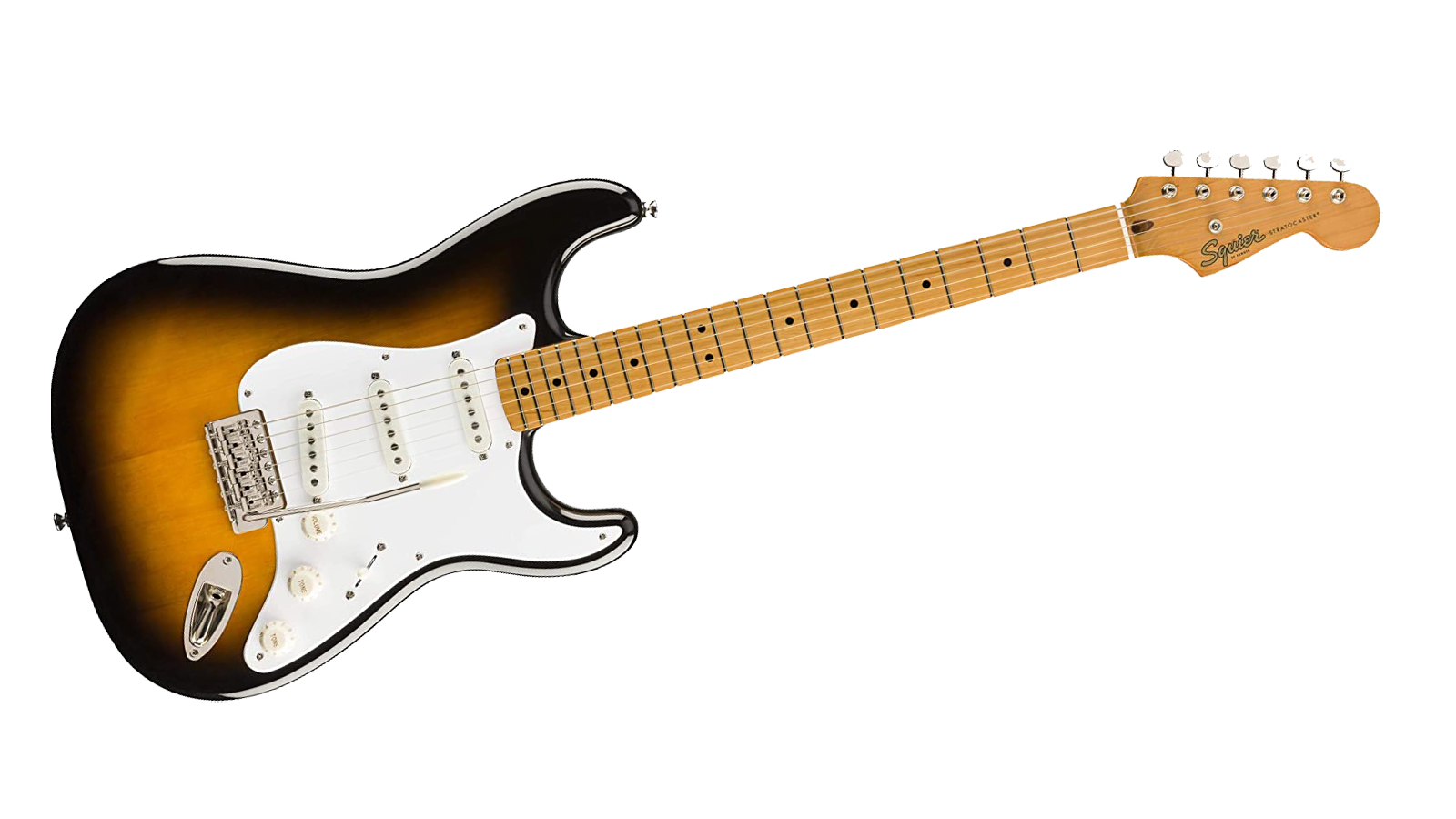
Specifications
Reasons to buy
Reasons to avoid
There are a number of impressive Stratocaster options in the Squier line, but if you want to go back to the source of why it captured the imagination of guitar heroes like David Gilmour, Hank Marvin, Eric Clapton and Jeff Beck, this is where it’s at.
The Classic Vibe line consistently impresses with its build quality that helps to bridge the gaps between beginner, intermediate and platform for modding, and this is no exception.
Vintage-style features include narrow-tall frets, Alnico III pickups, gloss neck finish, nickel-plated hardware, vintage tremolo system and ‘50s-inspired headstock markings.
Read our full Squier Classic Vibe ‘50s Stratocaster review
Best Telecaster
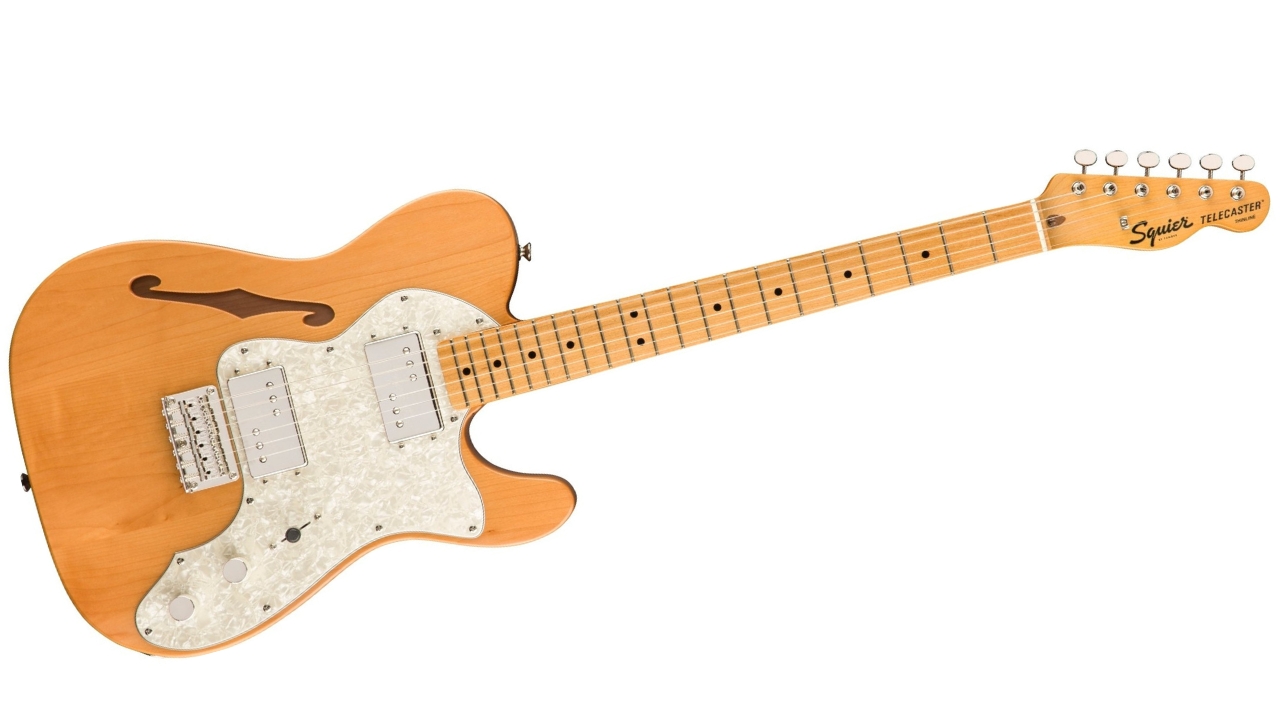
Specifications
Reasons to buy
Reasons to avoid
The Squier Classic Vibe ‘70s Telecaster Thinline is a simply superb guitar that delivers a much more lightweight option for those who don’t like a heavy guitar. Delivering iconic Tele tones minus any huge weighing down, this distinctive instrument is perfect for Tele lovers who want something different.
Packing two wide-range humbuckers, the Tele Thinline delivers a sound more articulate than your average humbucker, with a surprisingly bright tonality. You can dial it back if you want for a more traditional humbucker sound via the tone knob, but you can bet this guitar will cut through when you need it.
Featuring Fender’s classic ‘C’ neck profile, this is a guitar that will feel immediately comfortable with a wide variety of playing styles. If you’re used to a glossy neck then you’ll be at home here, but it’s something to note for players who haven’t encountered one yet, as the sticky and thick gloss might feel alien to some.
Read our full Squier Classic Vibe ‘70s Telecaster Thinline review
Best offset
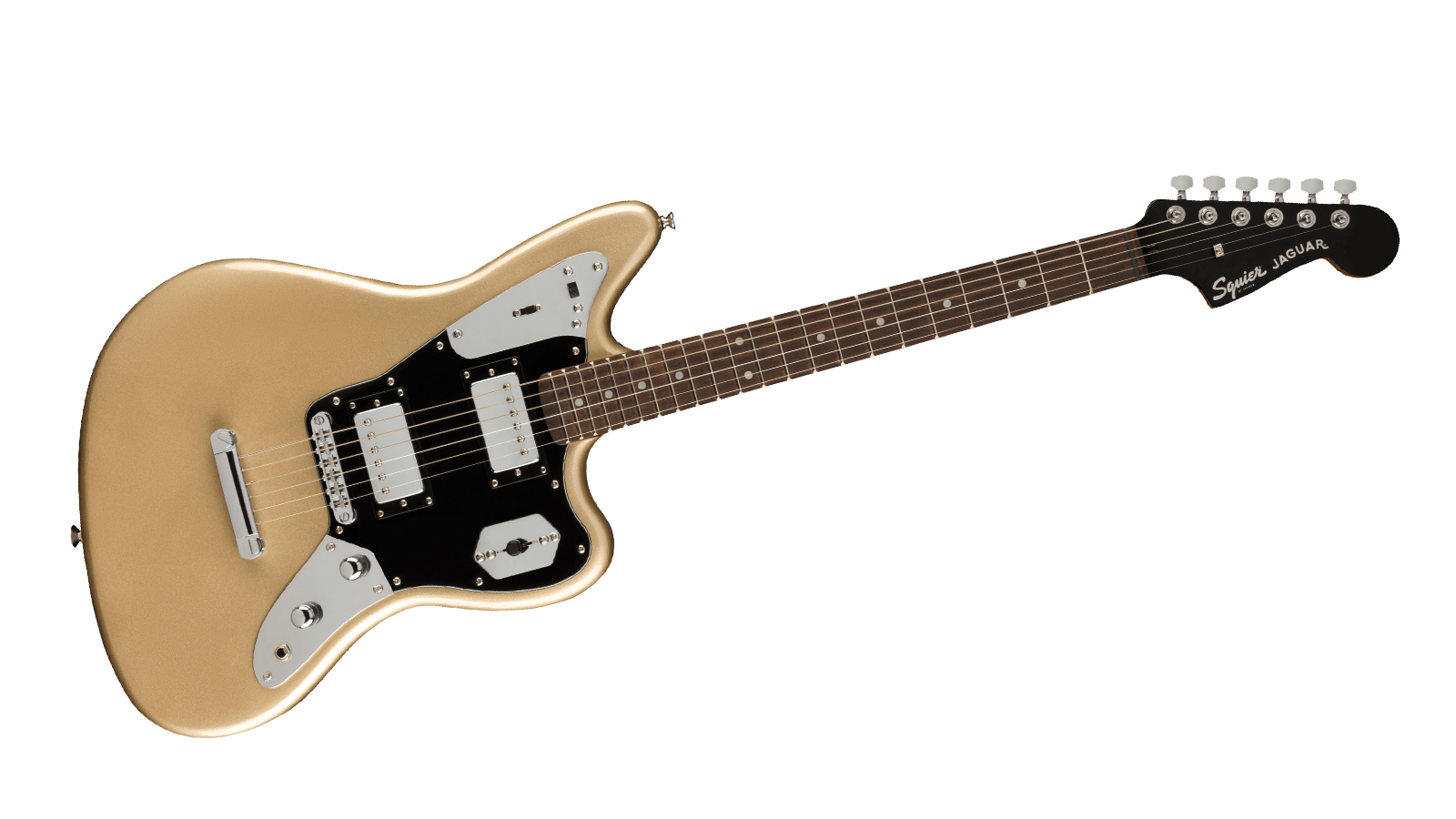
4. Squier Contemporary Jaguar HH
Our expert review:
Specifications
Reasons to buy
Reasons to avoid
The Contemporary series is widening the appeal of Squier even more and here’s a prime example of just how distinct and attractive its take on classic Fender models can be, with special finishes influenced by the Custom Shop. Frankly, both Shoreline Gold and Sky Burst Metallic options here are stunning. And there’s a lot more good news too…
A roasted maple neck is something we’re used to seeing on premium price electric guitars but here it is in all its caramel-hued glory. Other great touches are split shaft machine heads for faster string changes and sculpted neck heel; inspired by the much more expensive Fender Ultra range for enhanced access to the upper frets. There’s an adjustable bridge and stop tailpiece that replaces the traditional opinion-dividing Jaguar option.
The 12” fingerboard radius here may attract players who don’t feel suited to the usual Fender 9.5” (especially if they’re coming from Gibson guitars) and the Squier SQR Atomic humbuckers for rock with a coil tap switch for single-coil Jag tones – and you can run the pickups in series or parallel for even more tones. They really have thought of everything here… except left-handed players. But this is an incredible showcase for Squier value and classy Fender swagger.
Best semi-hollow
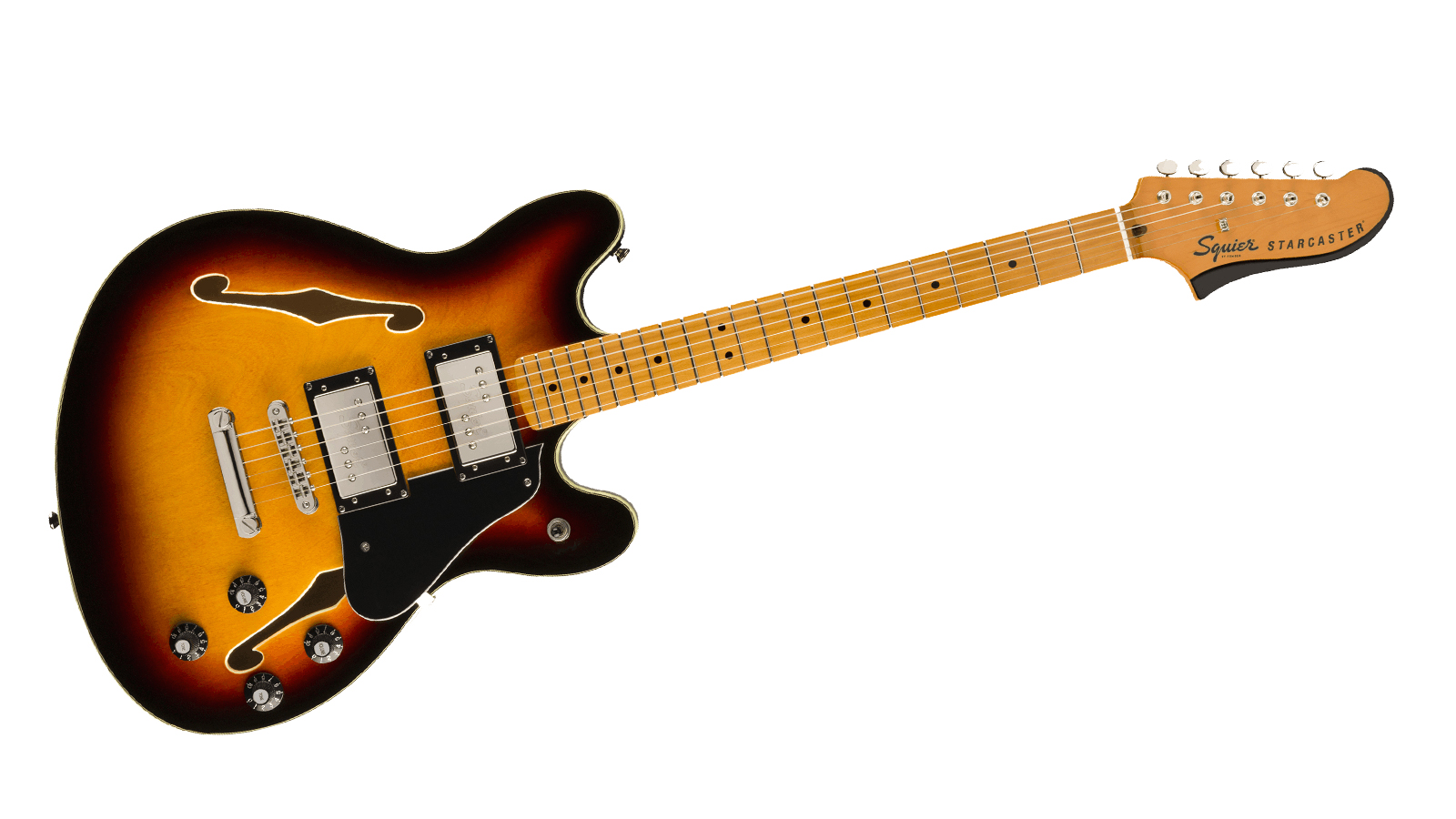
5. Squier Classic Vibe Starcaster
Our expert review:
Specifications
Reasons to buy
Reasons to avoid
The Classic Vibe range often gives some Fender models a run for their money and now the Fender Starcaster reissue has been discontinued, this is the closest alternative if you’re buying new. And it’s a very good one indeed for this cult classic semi-hollow design.
Fender’s original Wide Range Humbuckers were designed by the renowned Seth Lover of Gibson PAF fame and offered a great mix of clarity and warmth. These new Fender-designed versions carry the flame with a bright and rounded bridge pickup tone with enough bite to cut through, and a neck position that is warm in all the right ways. The acoustic resonance is also great here for playing without a guitar amp.
Read the full Squier Classic Vibe Starcaster review
Best baritone
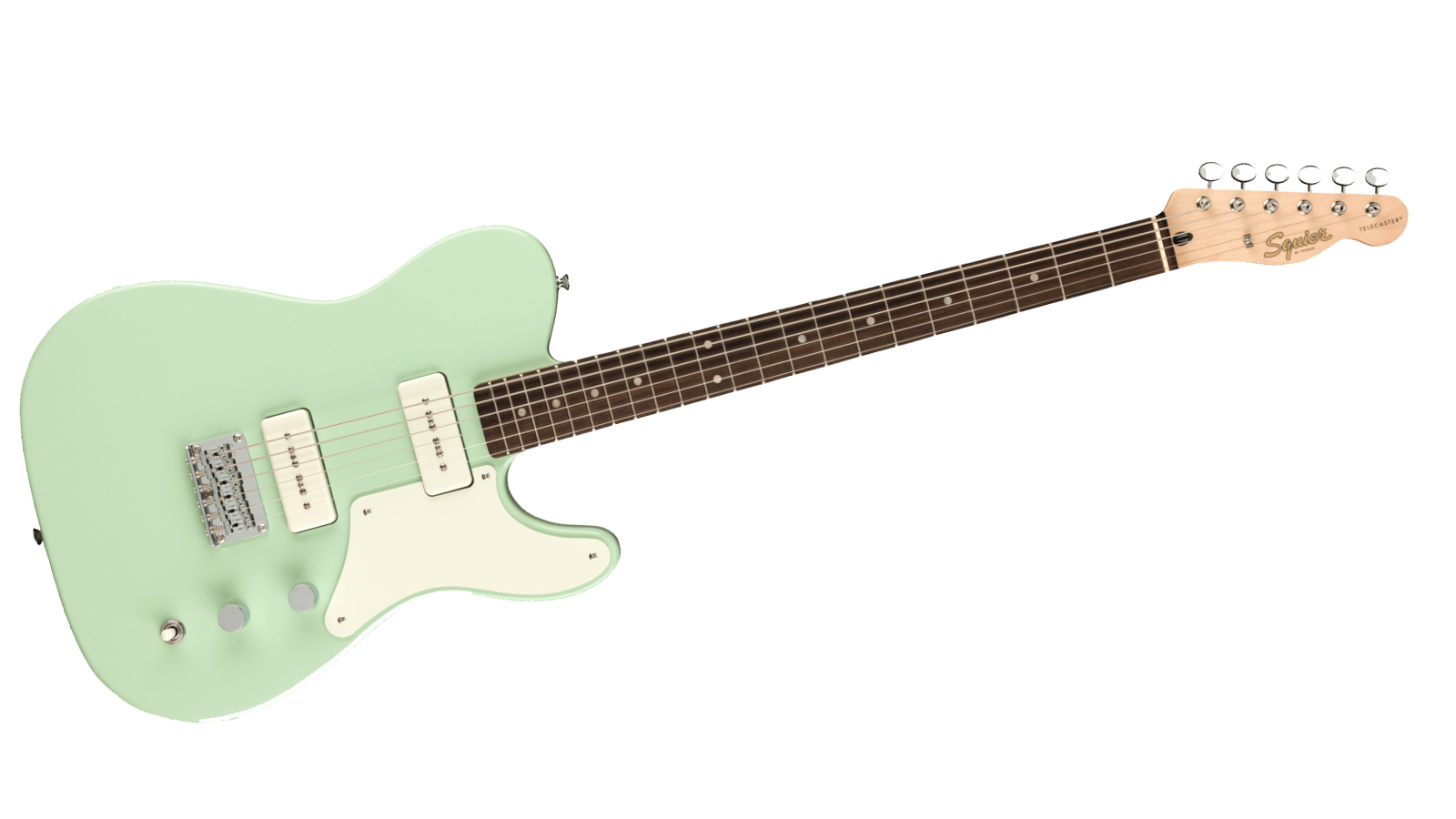
Specifications
Reasons to buy
Reasons to avoid
Many pro guitarists, including Mark Tremonti and Jerry Cantrell, have used baritone guitars for recording – their lower frequency and tuning afforded by their longer scale is great for adding a heavier foundation to rhythm tracks.
But baritones can also be a choice for main guitar, or something to pick up for heavier moments, and they are experiencing a real resurgence right now. That’s why this Squier option makes so much sense.
The 2021 Paranormal range includes an excellent lightweight Cabronita Thinline model and this solid body 27”-scale baritone also uses punchy Alnico soapbar P-90-style pickups that embrace an electric guitar’s mid-frequency strengths.
The Cabronita look here balances classic T-style with streamlined contemporary looks, especially with the color options of a clean Surf Green alongside the 3-Color Sunburst.
Read the full Squier Paranormal Baritone Cabronita Telecaster review
More options...
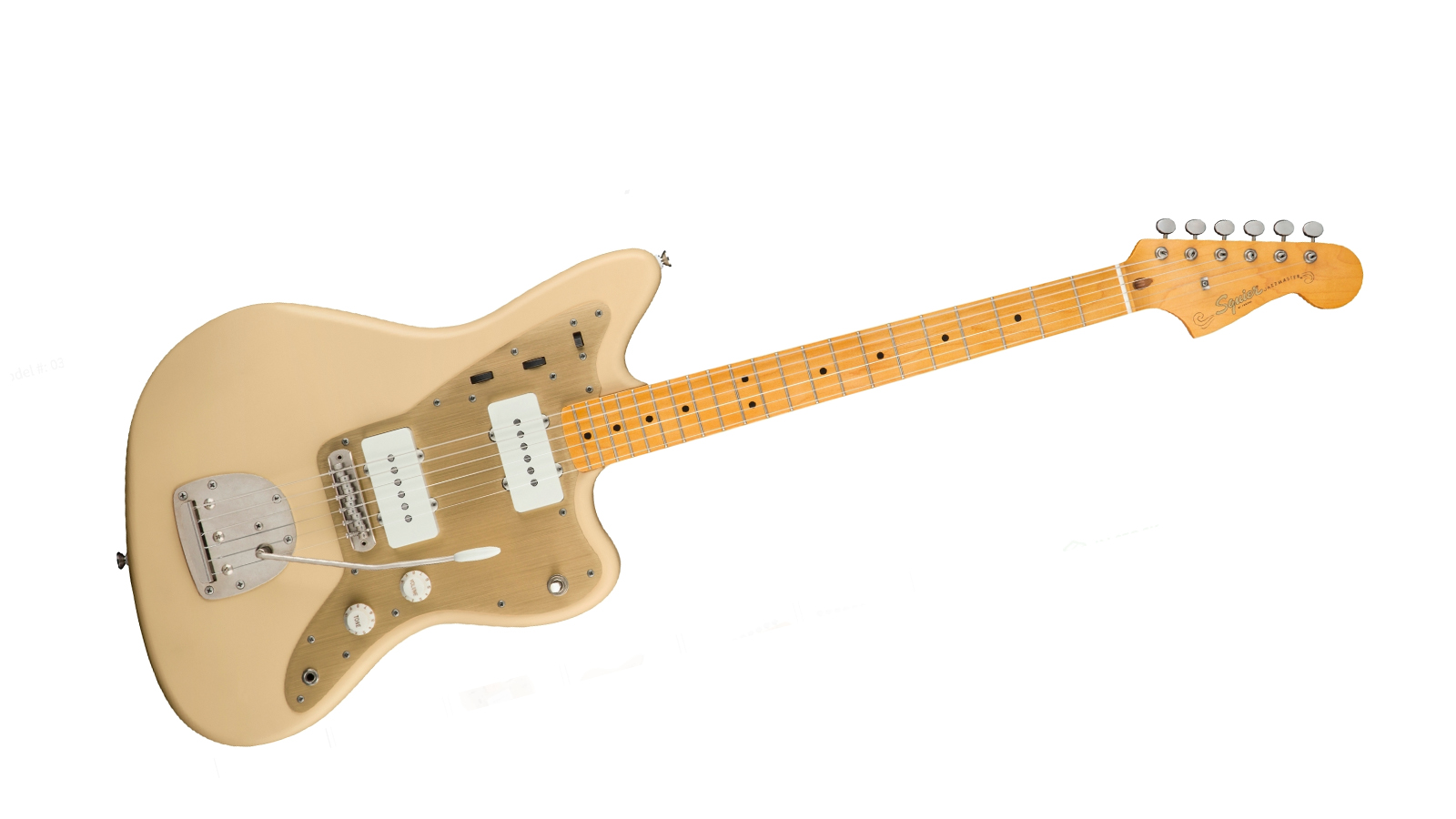
7. Squier 40th Anniversary Jazzmaster
Our expert review:
Specifications
Reasons to buy
Reasons to avoid
Celebrating the first instruments adorned with the Squier logo, this limited edition Jazzmaster is dripping with old-school mojo and is great for those seeking some vintage style tones on a budget.
Jazzmaster pickups are fairly unique; they’ve got the typical single coil chime and brightness, but there’s a little more bite to the bridge pickup, not too unlike a P-90. Then there’s the rhythm circuit which allows for a more mellow and darker neck pickup sound. You’ve actually got a really good range of tonal options.
The anodised scratchplate is reminiscent of the early Jazzmasters, as are the two retro finishes, and the aged chrome hardware gives the guitar a more timeless look. The C neck profile is great for any style of player, it being not too thick or too thin.
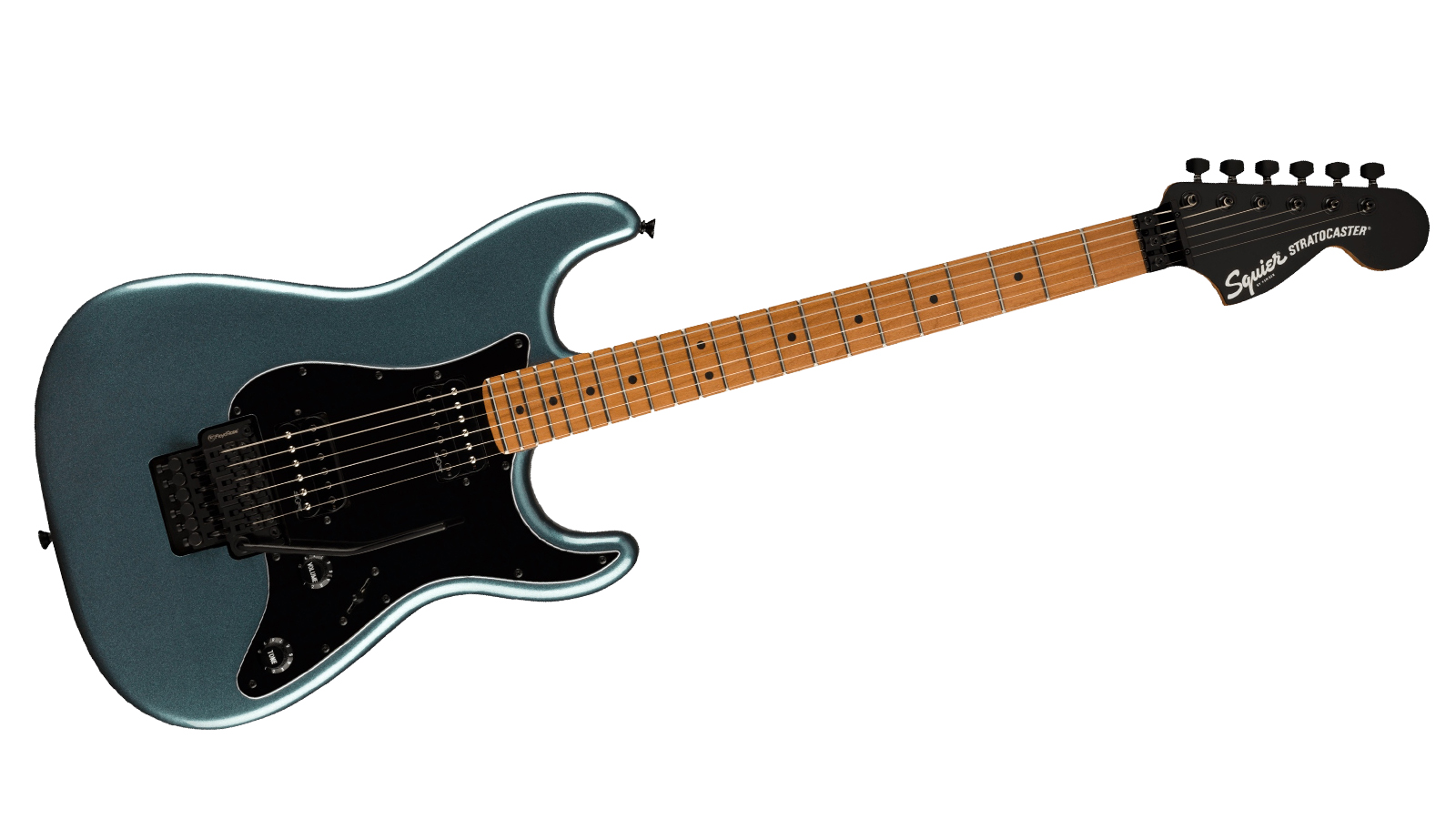
8. Squier Contemporary Stratocaster HH FR
Our expert review:
Specifications
Reasons to buy
Reasons to avoid
Though the hot humbuckers, jumbo frets and Floyd Rose make this a very capable hard rock and metal guitar that’s capable of divebombs and serious rhythm chunk, the Contemporary HH FR Strat also features coil splits for some serious versatility. A sculpted neck heel and butter smooth roasted maple neck also make a real difference to the playability here.
The tones are easily accessible via the five-way selector and the black hardware adds to the sleek contemporary feel that proves again that the Strat is a renaissance guitar for all genres of music and styles of player. And to underline it, other new Contemporary additions include the single-coil-loaded Stratocaster Special and Special HT.
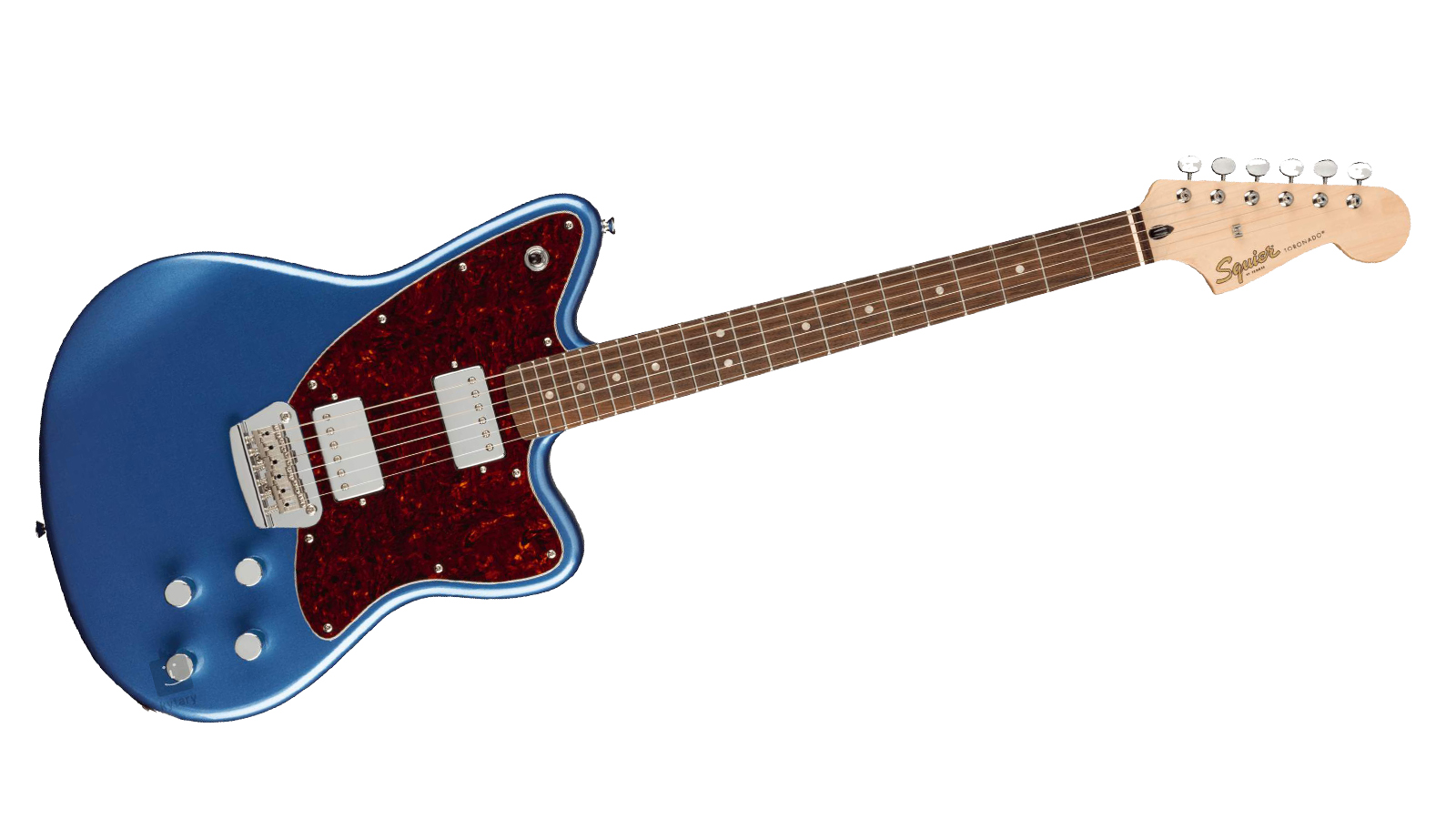
Specifications
Reasons to buy
Reasons to avoid
Fender isn’t just about its mainstay designs; many other shapes have come, gone and returned in its storied history. The Toronado offset is one such example that emerged in 1998 and although discontinued as a Fender model in 2007, we’re glad to see it back as part of the Squier Paranormal line. Especially as the original was seen in the hands of John Frusciante, My Chemical Romance’s Frank Iero, Lower Than Atlantis’ Mike Duce and influential post-rock outfit Explosions In The Sky.
Its relative obscurity adds to its appeal as an attractive alternative, along with an easier-playing 24.75” scale. The newly-designed high output Squier Atomic humbuckers mean this is capable of confidently entering high-gain territory with definition and the four-control layout means you can dial in specific tones for each of them.
Read the full Squier Paranormal Toronado review
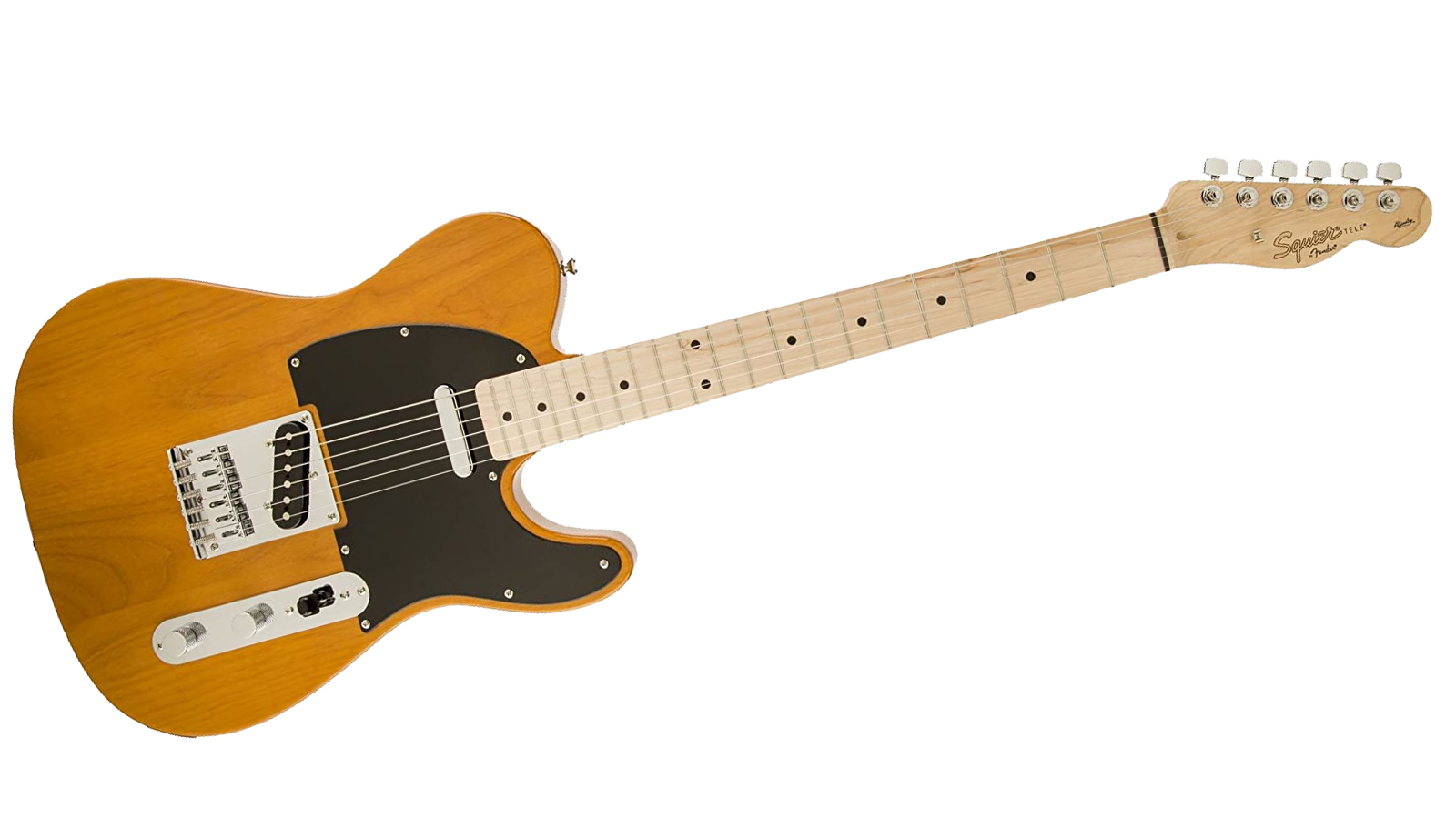
10. Squier Affinity Series Telecaster
Our expert review:
Specifications
Reasons to buy
Reasons to avoid
The Affinity series Telecaster represents the most affordable option for the model and is also a good representation of its strengths; no mods here, folks. This has the bright bridge position twang and full percussive neck tones associated with the Tele.
The Butterscotch Blonde is the classic finish for the Springsteen vibe but there’s three alternatives and the package here presents a great option for beginner players starting out, with scope for modding if required. We’re pleased to see a satin finish on the back of the neck here too that presents a smoother playing experience for all levels. And, hurray – there’s a left-handed model!
The Affinity range also offers an option for those who want something with humbuckers with the Telecaster Deluxe.

11. Squier Paranormal Jazzmaster XII
Our expert review:
Specifications
Reasons to buy
Reasons to avoid
The absolutely stunning and admittedly quirky Squier Paranormal Jazzmaster XII is rounding off our list of the best Squier guitars. It's clear to see this is no ordinary Jazzmaster. This 12-string Squier delivers double the amount of chime and jangle, and all at a very affordable price!
Now, 12-string guitars can get a bad rap for being cumbersome to play, but we are happy to report that there are no such playing issues here. In fact, the Paranormal Jazzmaster XII is an absolute joy to hold, with a solid feeling graphite-reinforced neck and comfortable C profile.
Featuring a pair of Fender-Designed alnico single-coil Jazzmaster pickups, this unusual Squier is bright, sharp and very articulate - everything you want in a 12-string guitar.
Squier guitar guide
There are loads of different Squier guitars to choose from, whether you want a beginner instrument or a regularly gigging workhorse. The current Squier ranges are divided into six main categories. Let’s get to know them a bit better…
Squier Sonic series
You can trust Guitar World
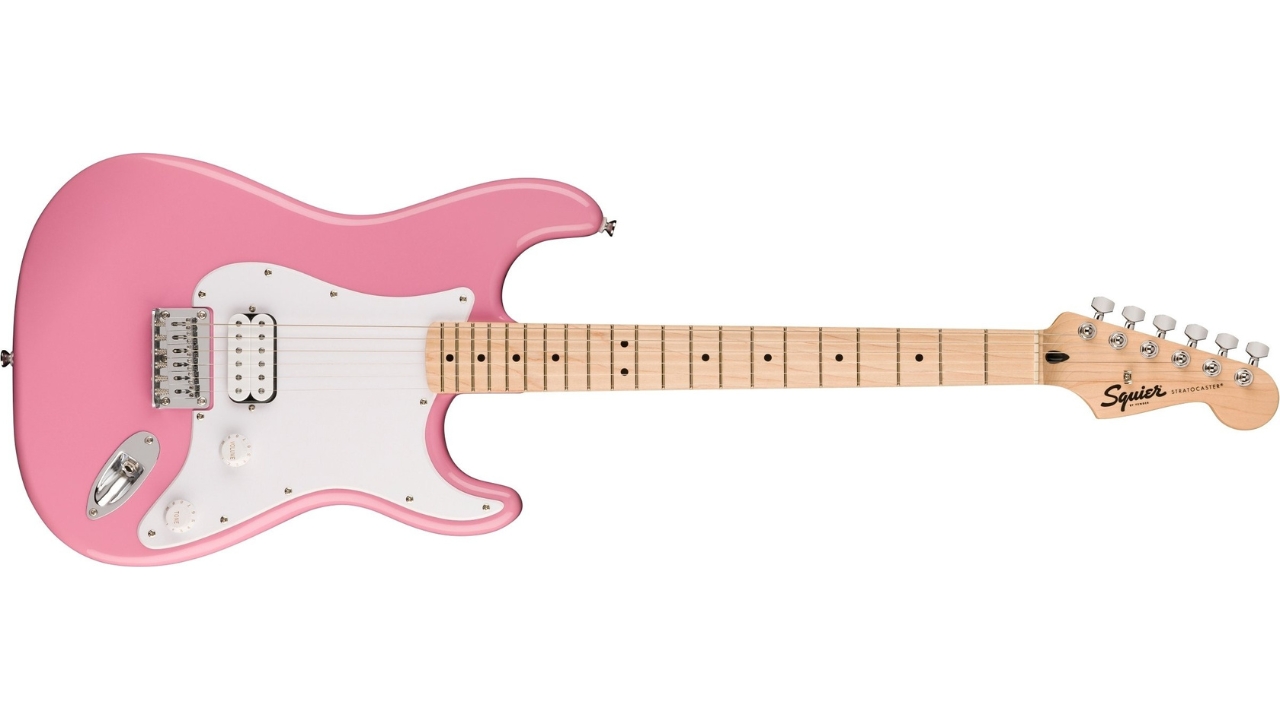
Squier’s Sonic range represents some of the best bang-for-buck guitars out there. They are entry-level instruments, and as such, the build quality and components aren’t as high quality as they are on some other Squier models. But, they’re cheaper, making them very accessible. Compared to some other guitars of a similar price point, the Squier Sonics are more playable, they sound great and they hold their tuning well.
In the Squier Sonic series, you can get a Strat, Tele, Esquire (like a Tele but with a single pickup), Mustang, Precision Bass, and Bronco Bass. These come in varying configurations, some will have single coil pickups while others have humbuckers, and there's an excellent range of color options too.
Squier Affinity series
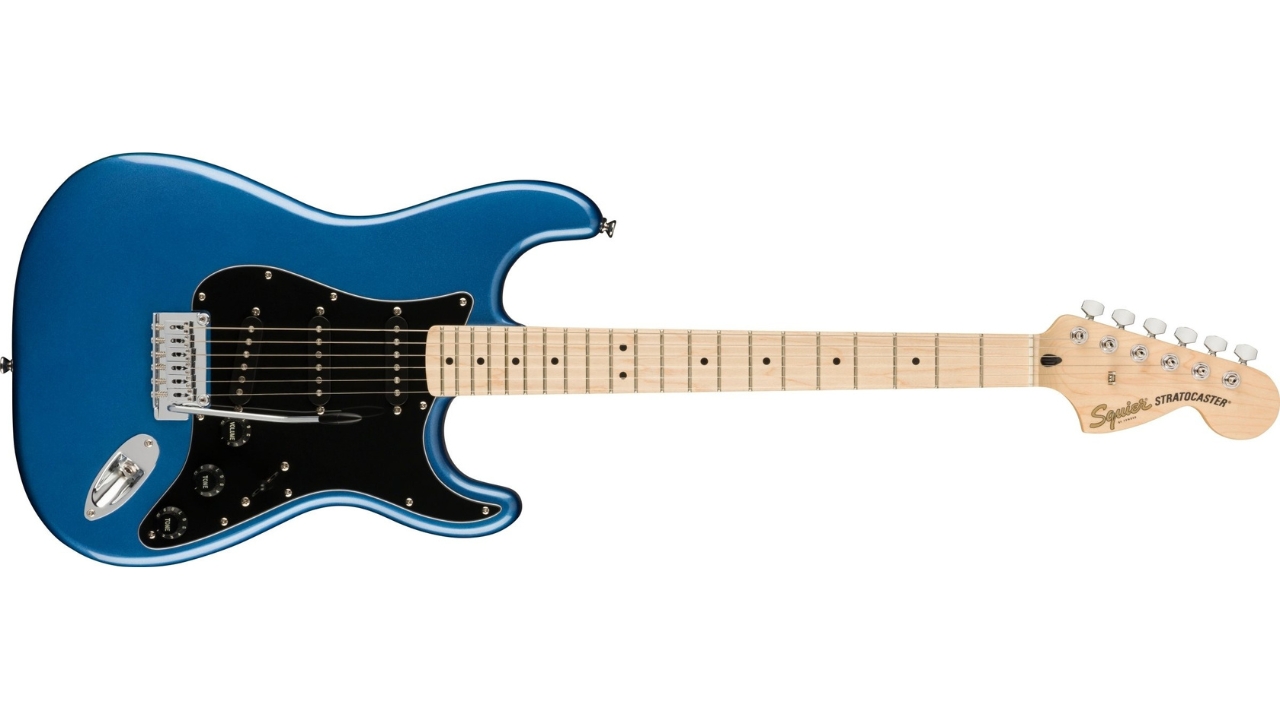
This is Squier’s student range and comprises all the usual Fender models – Strat, Tele, etc.- and some more interesting models for those who want to try something more exciting. They’re a step up in terms of quality from the Sonic range, and whilst they make for great beginner guitars, more advanced players will no doubt get along well with them too.
Squier Affinity guitars also make great upgrade platforms. Changing the pickups in a Squier Affinity will get you a lot more lifespan, without you having to shell out for a brand-new guitar. Because they're so well built, you can absolutely gig with one of these.
Squier Classic Vibe series
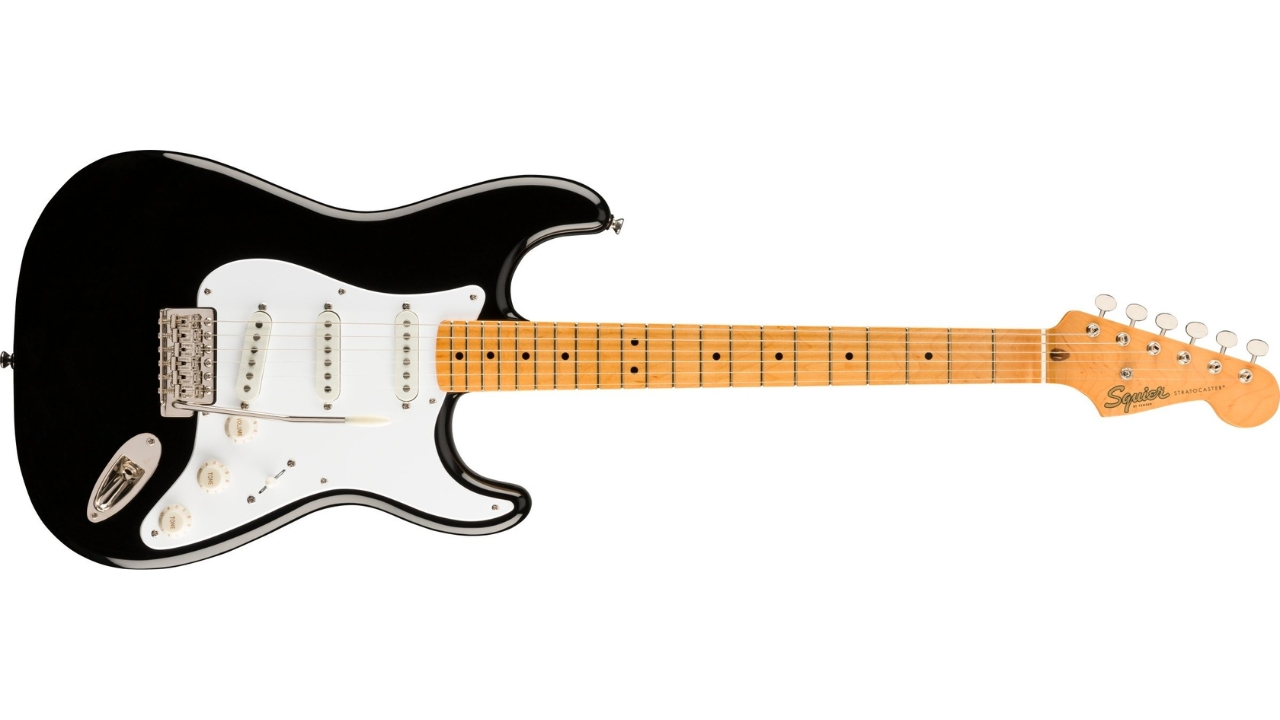
The Classic Vibe series really does showcase some of the best Squier guitars on offer. They’re replications of some classic-era Fender guitars. An original ’60s Fender Strat is going to cost you a lot of money, and whilst the Classic Vibes sit at the higher end of the Squier price range, they still give you a really nice vintage feel, look, and sound, for a fraction of the cost.
Perfect for players who want a classically-voiced guitar without forking out too much, the Classic Vibe series is very highly rated by players all over the world. Two of our top three picks in this guide are from the Classic Vibe series, which shows you just how good they really are.
Squier Contemporary series
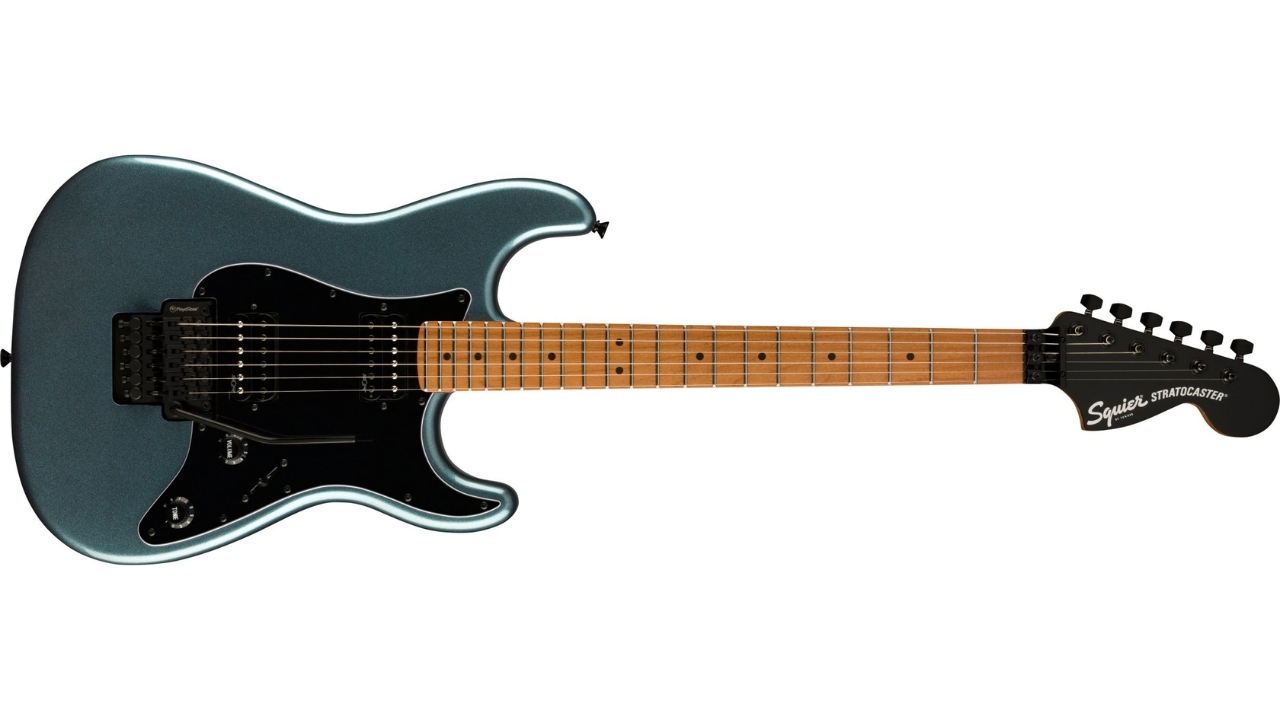
Squier Contemporary guitars usually feature more unusual pickup configurations, as well as some really unique finishes. As the name suggests, they’ve got more modern specs, so expect to see hotter pickups, locking tremolos, and more features that render them useful for contemporary players. Whilst they’re great for any style of music, hard rock and metal players love them.
Quite a few of the Contemporary series have a roasted Maple neck, which is a very premium bit of kit for this price point. While they're not one for the vintage-loving guitar player, the Squier Contemporary series is a great choice if you want something a bit edgier.
Squier FSR/Anniversary Models
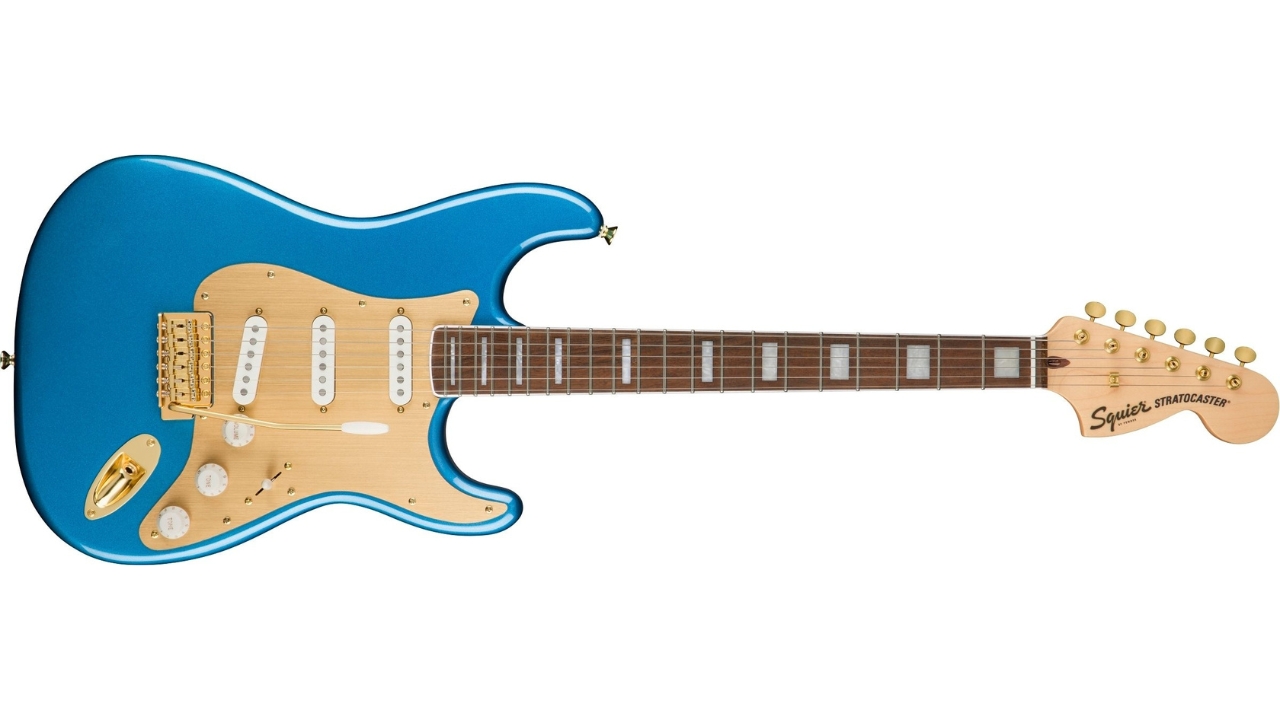
You’ll also see some more limited edition models, sometimes celebrating an anniversary or FSR models -– this stands for Fender Special Run. The specs on these can vary quite a bit, but if you’ve seen one that you like, don’t hang around too long as they won’t be in production forever.
Fender's 40th Anniversary Squier models are denoted by a gold scratchplate, giving them a touch of class to their looks. The series covers the full breadth of Fender's most famous guitars, with Strats, Teles, Jazzmasters, and a couple of basses delivering stunning looks and brilliant playability.
Squier Paranormal series
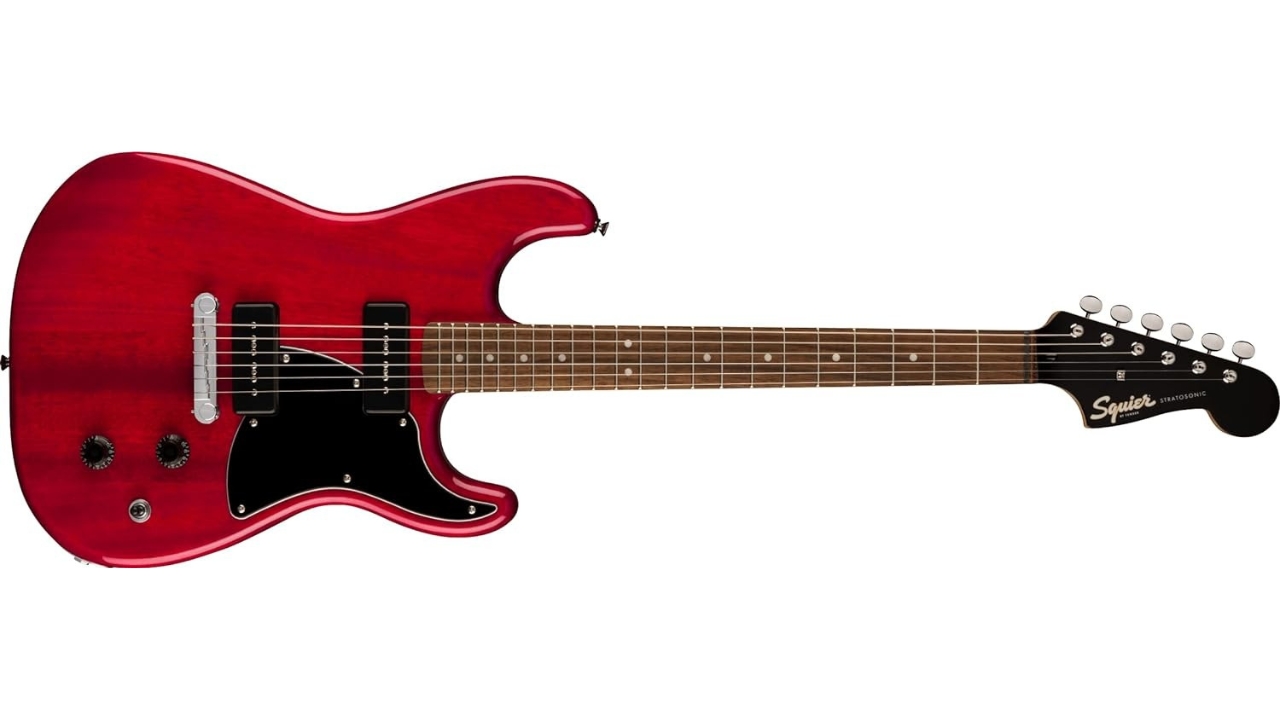
This is Squier’s more experimental range. Here you can find pickup configurations that you would not normally see on a certain body shape – Tele single coils in an offset body, for example. These guitars are built to a really good standard, offer some really unique tones, and allow for players to stand out from the crowd.
You can get 12-string guitars, baritone guitars, and plenty of other oddball choices. If a regular Strat is a bit too boring for you, then a Squier Paranormal guitar is the way to go.
FAQs
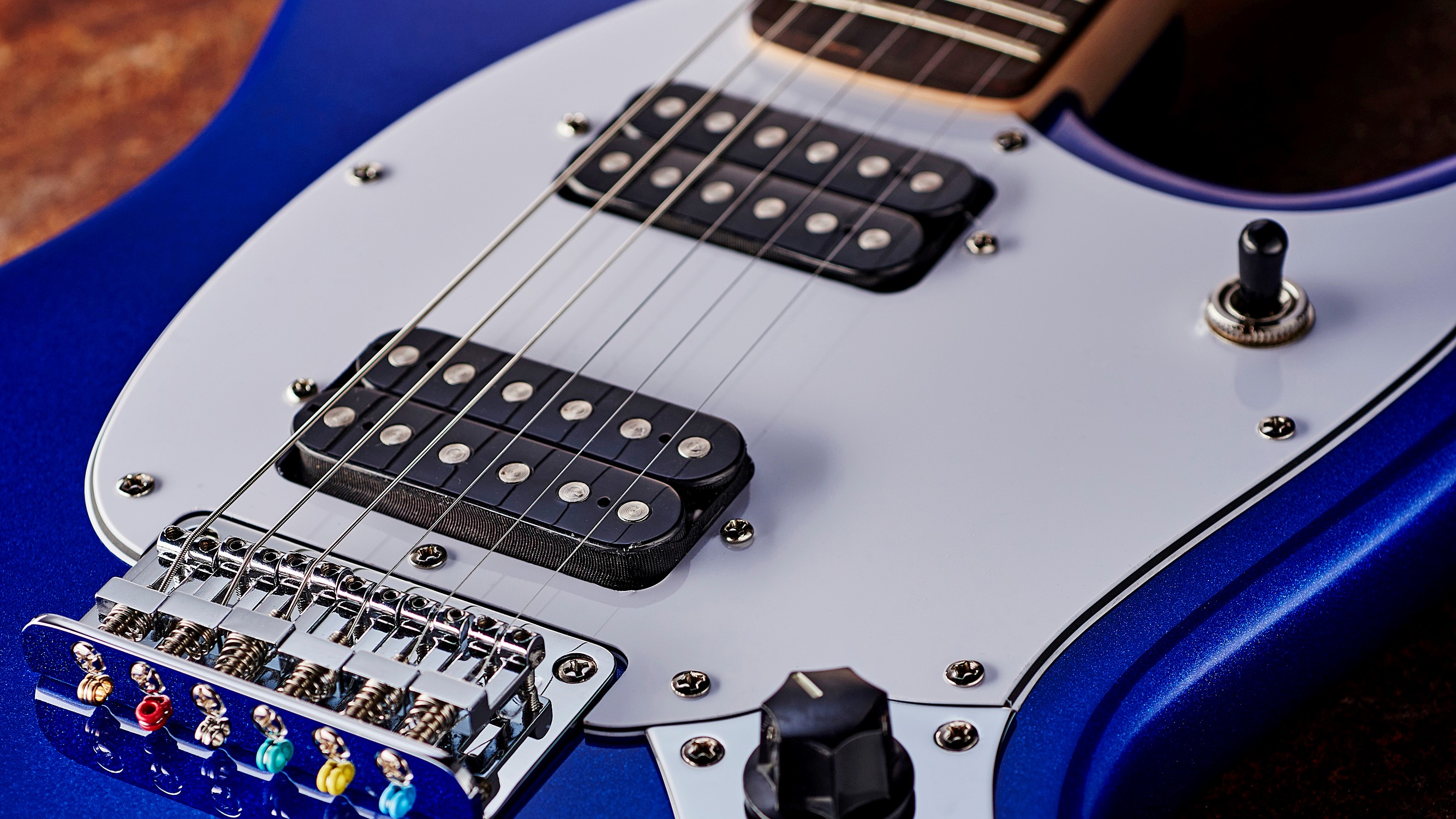
Why should I choose a Squier?
It's a fair question. Why, when there's such a huge wealth of budget-friendly guitars around, should you commit to one particular brand?
Well, simply put, we think Squier is one of (if not the) best brands when it comes to the sheer quality of workmanship. This eye for detail translates directly into the guitars being of a fantastic standard – one which we think is pretty much unbeatable for the money. When the 'Fender' name is at stake, you can be damn well sure that these guitars are going to be top quality, every time.
Another reason why you should choose a Squier is the sheer amount of choice you've got. The Squier product catalog is vast, and always growing – whether it's with more Fender classics like the Strat or Tele, or something slightly more wacky and unorthodox – so you know there's likely to be something to suit you and your style down to a tee.
Are Fender and Squier pickups the same?
Fender and Squier are known for their single coil pickups. Their most famous models, the Tele and the Strat, are usually single-coil equipped and can be heard on countless classic records over the last 70 years. Tones do vary from model to model, but generally speaking, single coils tend to sound bright, snappy, chimey and can stay cleaner for longer.
That said, there are some Squier guitars out there fitted with humbuckers. In contrast, these are usually warmer, fuller sounding, mellower and have a hotter output so can break up (distort) quicker. Both kinds of pickups can be heard throughout pretty much every genre of music, so it’s not a case of ‘humbuckers are best for rock’ etc - they’re just to different players’ tastes.
How we test
When testing a Squier guitar, we'll use all our usual processes in testing a guitar, ensuring we rigorously go over every aspect of the instrument in question. With literal decades worth of experience in playing guitar, you can rest assured our recommendations come from a place of knowledge.
When we first get a guitar in for testing we'll begin by examining the instrument in detail. We're looking for any potential issues in the finish and build quality, whether that's examining the neck pocket or ensuring any binding has been properly applied. We'll make note of the hardware, and the general configuration of the guitar too, to further inform our review and who it's for.
Once the visual inspection is over, it's time to check out the playability. We'll play a huge variety of styles on any guitar we can get, paying attention to the feel of the neck, the ease of the action, and the spacing of the strings. We're looking to see that the neck allows you to both play licks and chords with ease, and that there aren't any sharp fret ends getting in the way.
Next, it's the sound. We'll play through a variety of amplifiers to see how it reacts, trying both clean and overdriven sounds. With guitars that have multiple pickup configurations, we'll cycle through these too, noting how it reacts to your pick attack and the qualities of the amp in all the different positions. We'll also think about how it reacts in a full mix, and if possible play it with our own bands to see how it sits in that context.
We'll try and live with a guitar we're testing for at least a couple of weeks, which enables us to get a really good overview of how it performs, as well as get over the honeymoon period of getting new gear. Just like you would when buying a new guitar, we want to make sure we get a truly unbiased view of the instrument, using all our previous knowledge to inform our testing.
Read more about how we test products and services and how we make our recommendations.
Related buying guides
- Fender vs Squier: What's the difference?
- The best cheap electric guitars under $500
- Kickstart your journey with the best beginner electric guitars
- Match your Squier with one of the best Fender amps
- Stand out from the crowd with one of the best offset guitars
- These are the best Strat-style guitars
- Lose your head in the best headless guitars
Get The Pick Newsletter
All the latest guitar news, interviews, lessons, reviews, deals and more, direct to your inbox!

Rob has 20 years of experience writing, reviewing and editing for guitar magazines and websites, including Guitarist and Total Guitar. He's now the Reviews Editor for GuitarWorld.com and MusicRadar guitars, heading up our in-house reviews team to give you in-depth and honest tests of the latest guitar gear. He eats and dreams reviews.
- Matt McCrackenJunior Deals Writer
- Richard Blenkinsop
"A traditionally spec'd, workhorse machine that sounds like a Les Paul should while offering some limited-edition aesthetics": Gibson Les Paul 60s Double Trouble review
“It’s the guitar I’ve dreamed of making for years”: Jackson and Bring Me the Horizon’s Lee Malia champion the rise of the metal offset with new signature Surfcaster










